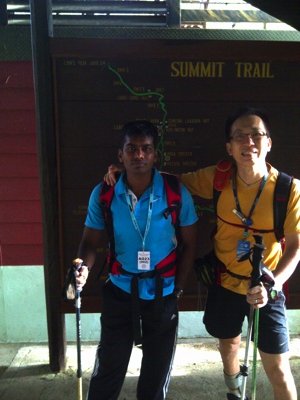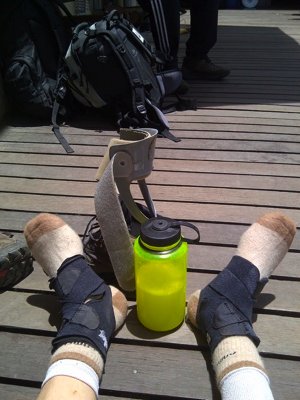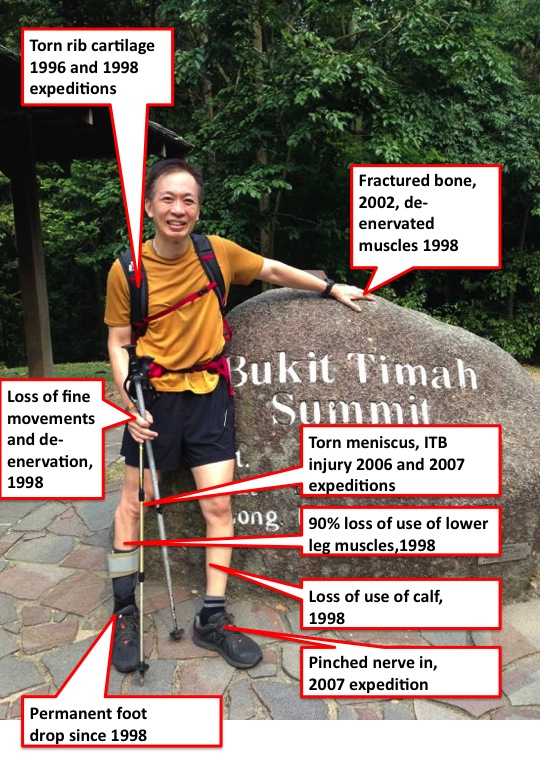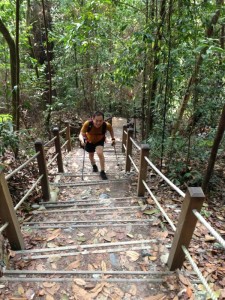Photos of success rarely show the work that went before to get it. In the short video collage below on Youtube, I’ve included some clips of the climb, the changing weather, and of course the summit; never guaranteed:
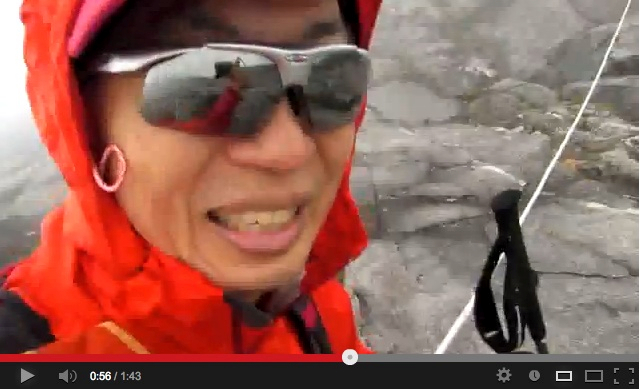
Watch the video collage of the climb up Kinabalu (1:43) on Youtube: http://www.youtube.com/watch?v=pgI0AiYQZSUThe Straits Times were also kind to cover the story a couple of days later in The Sunday Times newspaper. NB: This climb is in aid of the good work of the Society for the Physically Disabled. Please support this cause by going to the specific “Kinabalu” link and make a donation. I dont get a cent. It all foes to the SPD. We donated $4095 a dollar fro every metre climbed. Hope you can give generously! Thanks.
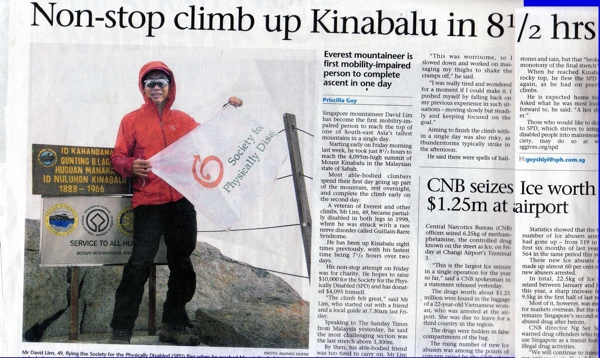
After leaving Magesh at Laban Rata – he looked so whacked, it would be cruelty to have asked him to continue – I went up with Ananias Mukim, a friendly Parks guide. The most tiring part of the clinb then began, tackling one steep set of cut steps or stairs after another, as the vegetation began to give way to more alpine shrubbery. It was past noon, and the weather was still holding. Friday, that day, was deemed by the weather forecast to be the worst of the week, with heavy rain expected. So I kept crossed fingers. 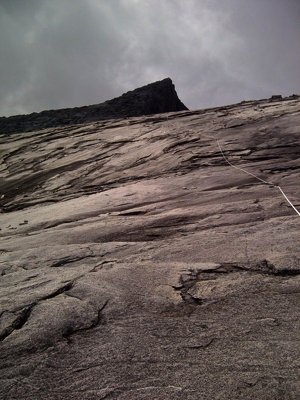 Familiar landmarks from past trips came and went. Finally, the ropes began. The start of the Panar Laban slabs just below the 3660m Sayat Sayat Hut have these thick white ropes that are fixed all the way t0 the summit. Most of the time you won’t need them, and they serve more as a marker. The first section was a traverse up some 60-degree slabs, than a steeper, more sustained bit. This was just around where two climbers fell in two separate incidents in 2013. I was pretty tired by then, and what should have been a doddle in the old days became a task demanding far more concentration than usual. I had slowed down a lot by the time I cleared the steep bit below the last hut. Emerging over a rise I saw a new, green building. What the %$£@?? Turns out it’s the new set of toilets, built just above Sayat Sayat. A new checkpoint shelter was also built. No sign of any rangers, but I met a few Austrians and Bulgarians attempting some technical routes.I soon drank the last of my water (from the original 2.5 litres), ate a GU gel, and continued up the summit slabs. At about 3pm , the weather inevitably began to turn. From an ascent rate of about 375m per hour, I had dropped to about a climb rate of 230m per hour. The cramps that started at 3400m had eased off -proabbly because of my slower climb rate, so that was good. It began to drizzle, and then rain. Bugger. Time to put on my rain shells. By the time I had finished, the rain had eased somewhat. And then the plough up the summit pyramid block. Ananias’s main help was to be there to have some chit chat with me – anything from climbing gear to his dreams and ambitions. It broke the monotony of the final stretch.
Familiar landmarks from past trips came and went. Finally, the ropes began. The start of the Panar Laban slabs just below the 3660m Sayat Sayat Hut have these thick white ropes that are fixed all the way t0 the summit. Most of the time you won’t need them, and they serve more as a marker. The first section was a traverse up some 60-degree slabs, than a steeper, more sustained bit. This was just around where two climbers fell in two separate incidents in 2013. I was pretty tired by then, and what should have been a doddle in the old days became a task demanding far more concentration than usual. I had slowed down a lot by the time I cleared the steep bit below the last hut. Emerging over a rise I saw a new, green building. What the %$£@?? Turns out it’s the new set of toilets, built just above Sayat Sayat. A new checkpoint shelter was also built. No sign of any rangers, but I met a few Austrians and Bulgarians attempting some technical routes.I soon drank the last of my water (from the original 2.5 litres), ate a GU gel, and continued up the summit slabs. At about 3pm , the weather inevitably began to turn. From an ascent rate of about 375m per hour, I had dropped to about a climb rate of 230m per hour. The cramps that started at 3400m had eased off -proabbly because of my slower climb rate, so that was good. It began to drizzle, and then rain. Bugger. Time to put on my rain shells. By the time I had finished, the rain had eased somewhat. And then the plough up the summit pyramid block. Ananias’s main help was to be there to have some chit chat with me – anything from climbing gear to his dreams and ambitions. It broke the monotony of the final stretch.
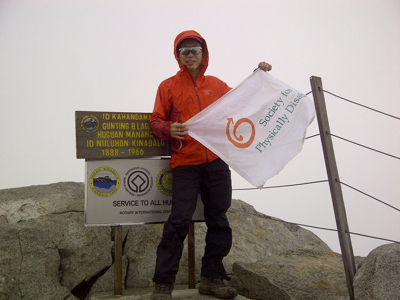
At the summit of Mt Kinabalu – Low’s Peak. First single-day ascent by a mobility-impaired athlete
It was good to practise my Malay that day. Just before the top, the clouds came in again and it began to hail. Well, not very big balls of ice – more like graupel. Finally, the summit – at 1555hrs, just about 8.5 hours after setting off that morning. At the summit, I took some snaps, unfurled the Society of the Physically Disabled flag, which I have had since 2000, and the began to pack to head down. The flag has been on Everest, summits of virgin peaks, Aconcagua, Orizaba and host of other mountains. Bear, the stuffed toy from Maureen was, as on many of my climbs, strapped to the outside of my FirstAscent Bacon pack. best of all, the focused training to build balance in one-legged stances, and the high intensity circuits had really helped; and wil probably be the new normal for me , instead of the turgid Bukit TImah hill staircase sessions of the old days.
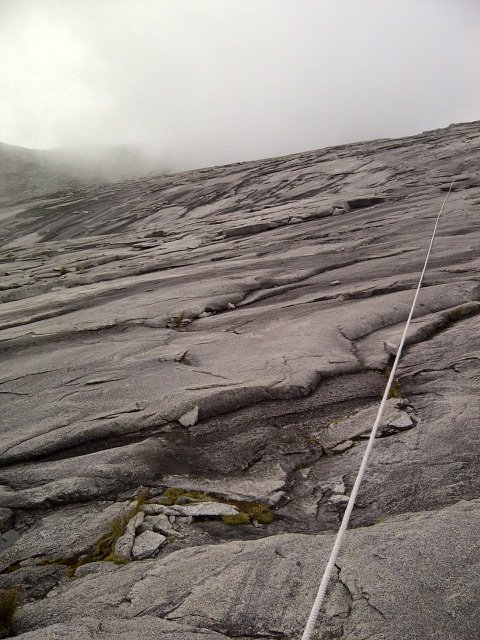
Clouds come and go over the summit block
Some quick calculations confirmed that this was surely my biggest one-day ascent of any summit. Even the long days like my ascent of Mt Blanc from the Italian side in 1992 – only involved an 1800 vertical gain day. This was a 2250m gain day by comparison – and no wonder I felt crappy and tired. Pretty soon, it was down, down and down. It began to rain. A lot. As the rain began to slide down my rain pants and into the top bits of my boots, I whipped out some cheapo home-made gaiters. To save weight, I had cut some black bin liners that I could stuff into the top of my socks so that they would extend to the soles of my boots. Rain coming off mypants would then runoff the binliners and over the waterproof boots. This old trick had worked a treat in the past, and did so again that afternoon.
The sky began to change as the sun began to set, filling the horizon with some really interesting hues of blue, and amber. I got into the Laban Rata cafeteria at 630pm, just in time to see Magesh forcing down some food. The “buffet” dinner, which I normally really looked forward to – had lost it’s appeal. I was just too tired to enjoy a big meal. A serving of noodles, veg, and some meat was enough for this weary hiker.
That night, I stayed up long after others had gone to sleep, trying to rehydrate myself with several mugs of lukewarm tea and water. And even when I had hit the bunk, some idiot was snoring like a buzz saw. -for hours! I really slept around 230am after Magesh and several hundred other people got up to go for the summit in the usual pre-dawn procession. I awoke at 630am, checked my messages (of the joy of network coverage) and enjoyed looking at the shadow of Kinabalu thrown down the side of the mountain. I relaxed over the great Pendant Hut “2nd” breakfast ( the 230am start offers only hot drinks and toast) of beans, boiled eggs, tinned sausages and more toast with jam. Magesh came back with his summit success around 0930hrs. We left for the descent at about 11am. I felt strong, heading down and began to pick up speed. By the time I reached Layang Layang at 2700m, I began to toy with the idea of beating my own best time down the mountain (not that I had ever raced down in the old days) of around 3.5 hours.
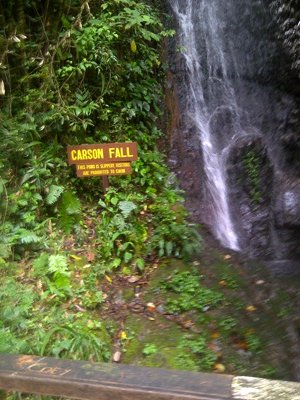
Carson’s Falls
Just around 1:40 or so, I heard the oh-so-welcome “whooshing” sounds of Carson’s Falls, a landmark that tells you that you are pretty close to Timpohan Gate. Then a few minutes later, you climb the totally pointless 120 steps UPHILL to the Gate, and your trip is over – this time. Time: 2hours 51 minutes. Magesh and Ananias arrived 45 minutes later. A good time for Magesh. The rest of the trip back to Kota Kinabalu was uneventful. Lots to enjoy later – the Gaya Street market on Sunday morning, lots of eating, and a massage. A comfy life is a good life. But you learn more by suffering every now and then.
Also think of those who can’t enjoy many of things that we do. Support the work of the Society for the Physically Disabled by making a donation today. Thanks for your help.
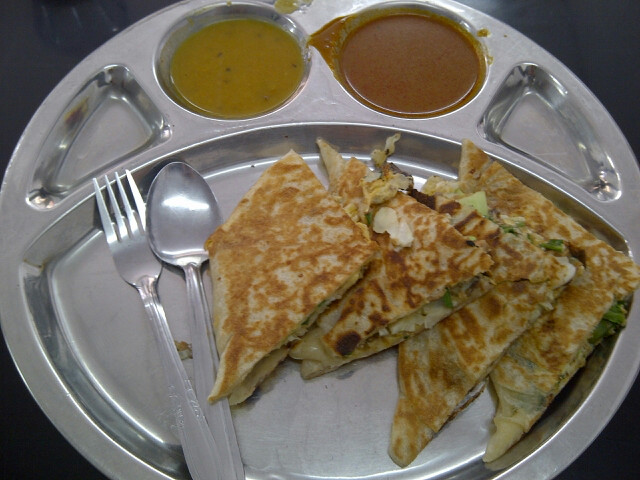
Only in Kota Kinabalu: A sardine and veggie murtabak.Traditional Indian fried flat bread stuffed with the fish and vegetables, together with some fish curry.
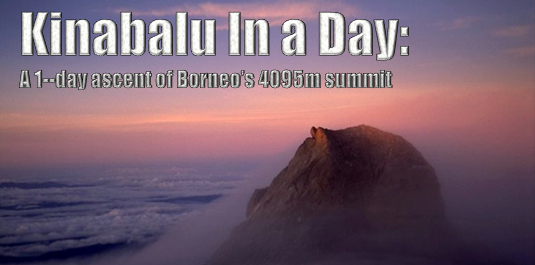
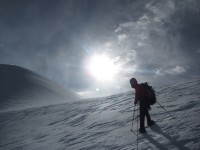
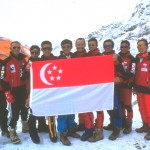

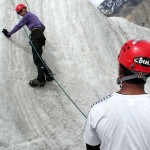
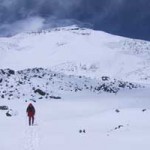

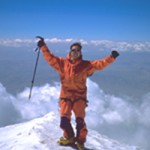
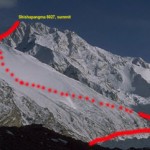

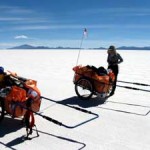

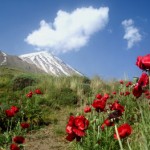

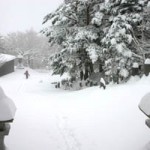
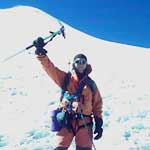
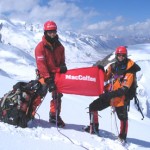
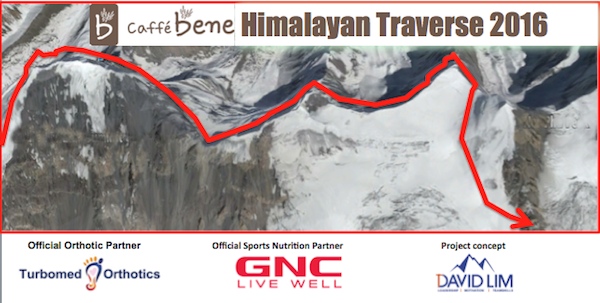
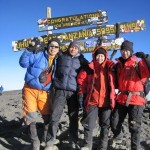

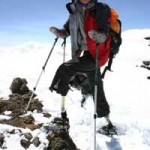
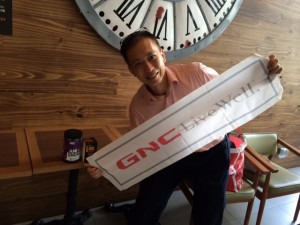

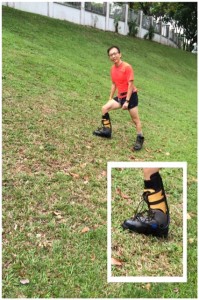
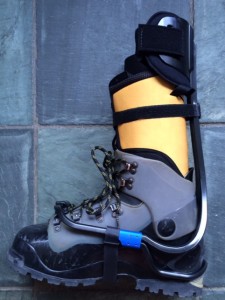
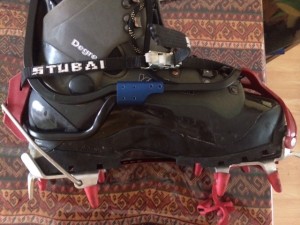


 Familiar landmarks from past trips came and went. Finally, the ropes began. The start of the Panar Laban slabs just below the 3660m Sayat Sayat Hut have these thick white ropes that are fixed all the way t0 the summit. Most of the time you won’t need them, and they serve more as a marker. The first section was a traverse up some 60-degree slabs, than a steeper, more sustained bit. This was just around where two climbers fell in two separate incidents in 2013. I was pretty tired by then, and what should have been a doddle in the old days became a task demanding far more concentration than usual. I had slowed down a lot by the time I cleared the steep bit below the last hut. Emerging over a rise I saw a new, green building. What the %$£@?? Turns out it’s the new set of toilets, built just above Sayat Sayat. A new checkpoint shelter was also built. No sign of any rangers, but I met a few Austrians and Bulgarians attempting some technical routes.I soon drank the last of my water (from the original 2.5 litres), ate a GU gel, and continued up the summit slabs. At about 3pm , the weather inevitably began to turn. From an ascent rate of about 375m per hour, I had dropped to about a climb rate of 230m per hour. The cramps that started at 3400m had eased off -proabbly because of my slower climb rate, so that was good. It began to drizzle, and then rain. Bugger. Time to put on my rain shells. By the time I had finished, the rain had eased somewhat. And then the plough up the summit pyramid block. Ananias’s main help was to be there to have some chit chat with me – anything from climbing gear to his dreams and ambitions. It broke the monotony of the final stretch.
Familiar landmarks from past trips came and went. Finally, the ropes began. The start of the Panar Laban slabs just below the 3660m Sayat Sayat Hut have these thick white ropes that are fixed all the way t0 the summit. Most of the time you won’t need them, and they serve more as a marker. The first section was a traverse up some 60-degree slabs, than a steeper, more sustained bit. This was just around where two climbers fell in two separate incidents in 2013. I was pretty tired by then, and what should have been a doddle in the old days became a task demanding far more concentration than usual. I had slowed down a lot by the time I cleared the steep bit below the last hut. Emerging over a rise I saw a new, green building. What the %$£@?? Turns out it’s the new set of toilets, built just above Sayat Sayat. A new checkpoint shelter was also built. No sign of any rangers, but I met a few Austrians and Bulgarians attempting some technical routes.I soon drank the last of my water (from the original 2.5 litres), ate a GU gel, and continued up the summit slabs. At about 3pm , the weather inevitably began to turn. From an ascent rate of about 375m per hour, I had dropped to about a climb rate of 230m per hour. The cramps that started at 3400m had eased off -proabbly because of my slower climb rate, so that was good. It began to drizzle, and then rain. Bugger. Time to put on my rain shells. By the time I had finished, the rain had eased somewhat. And then the plough up the summit pyramid block. Ananias’s main help was to be there to have some chit chat with me – anything from climbing gear to his dreams and ambitions. It broke the monotony of the final stretch.



